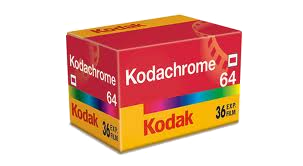Kodak’s filing for Chapter 11 bankruptcy has inspired a swarm of commentators to blame the company’s management for failing to catch the digital wave, leading to a long decline and possible demise. Kodak’s management was indeed uninspired. But even with perfect hindsight, it’s hard to see what even brilliant managers could have done to reverse the course of history.
 Kodak did not fail to see the digital revolution. It was an early pioneer in the development of the electronic light sensors at the heart of digital cameras. It was a pioneer in displays, inventing the organic LED. It knew many years ago that digital would replace film. But it is entirely possible to see the future and still not be able to do much about it.
Kodak did not fail to see the digital revolution. It was an early pioneer in the development of the electronic light sensors at the heart of digital cameras. It was a pioneer in displays, inventing the organic LED. It knew many years ago that digital would replace film. But it is entirely possible to see the future and still not be able to do much about it.
Kodak’s fundamental problem was that its business was not photography, but the manufacture and processing of film and photographic paper. After the Brownie years, it was not very big force in cameras and was never a serious player in professional equipment.
Furthermore, the economics of digital photography are radically different from film. A 32 gigabyte memory card costs less than buying, developing, and printing two rolls of color negative film; it holds thousands of pictures and can be reused many, many times. Kodak’s business was built around the recurring revenue of film purchases, and there is nothing like that in the digital world.
It’s easy for critics to say that when the digital revolution began, Kodak should have moved swiftly to get out of film and into the new technology. But film wasn’t easily gotten out of. The film and paper businesses were immensely profitable. Even more significant, Kodak had a vast capital investment in manufacturing. In fact, for years a popular, if grim, form of entertainment in Kodak’s home of Rochester, N.Y., was watching the company blow up former Kodak Park film manufacturing buildings that it no longer had a use for. The inability to shed its vast investment in film manufacturing and processing probably made an eventual bankruptcy inevitable, and perhaps the most serious criticism of Kodak management is not facing the music sooner.
The biggest players in digital photography never were burdened with this sort of legacy. Nikon, Canon, and Olympus are optics specialists, and optics are optics, whether for digital cameras or film. Panasonic and Sony, of course, are huge diversified consumer electronics companies. Only the much smaller Fujifilm has its roots in the film business.
I hope Kodak can emerge from bankruptcy as a viable business, stripped of its costly legacies. There’s still a business for film as a specialty product and people are still printing pictures, albeit in nowhere near the number they once did. But it will be a much smaller company.

But Kodak has been selling copiers and digital cameras for a long time, and I’m surprised those businesses didn’t provide enough revenue to allow Kodak to avoid bankruptcy.
I foresee that oil companies are going to face the same problems that shut down Kodak, within the space of two decades. When oil processing is no longer required, they too will be burdened with huge investments in terms of facilities and machinery that they cannot easily shed.
Thank you for great article. I look forward to the continuation.
Pretty! This has been a really wonderful post. Many thanks for providing these details.